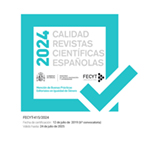Política en las redes, redes en la política: estudios de caso de la campaña #VivirSinMiedo
Resumen
Esta investigación se propuso explorar la campaña de reforma constitucional “Vivir Sin Miedo” como estudio de caso sobre el uso de las redes sociales electrónicas a nivel político en Uruguay. La reforma considera entre otros puntos la creación de una guardia militar y la “cadena perpetua revisable”. El objetivo del trabajo es mostrar cómo los diferentes actores nucleados en torno a la temática captan y se apropian del espacio virtual. Conocer la forma topológica de estas redes y vislumbrar si estas logran despolitizar el tema e impactar en la difusión de su mensaje hacia nuevos adherentes de todos los partidos políticos. O por el contrario, representan una red compacta de actores dentro de un mismo espectro ideológico, que comparten una misma preocupación sin ir más allá de sus preferencias partidarias. Para ello, se colectaron un conjunto de tweets y retweets en torno al hashtag #VivirSinMiedo” para su posterior procesamiento y análisis en grafos. Entre los principales hallazgos se destacan la existencia de una red compacta descentralizada en tres grandes sub-redes, las cuales están conformadas básicamente por los propulsores de la campaña por un lado (núcleo duro de actores políticos vinculados a la reforma). Un cinturón de adherentes partidarios. Y otro cinturón de adherentes no partidarios, con lazos débiles hacia los actores políticos. Pese a existir “brokers” y replicadores de información independientes (periodistas), la red #VivirSinMiedo no hace más que difundir la campaña entre “iguales” (nodos que comparten preferencias políticas), siendo su capacidad de expansión hacia nuevos adherentes muy restringida.
Descargas
##plugins.generic.pfl.publicationFactsTitle##
##plugins.generic.pfl.reviewerProfiles## N/D
##plugins.generic.pfl.authorStatements##
Indexado: {$indexList}
-
##plugins.generic.pfl.indexedList##
- ##plugins.generic.pfl.academicSociety##
- N/D
- Editora:
- Grupo de Investigación Cultura Digital y Movimientos Sociales. Cibersomosaguas
Descarga artículo
Licencia
La revista Teknokultura, para fomentar el intercambio global del conocimiento, facilita el acceso sin restricciones a sus contenidos desde el momento de su publicación en la presente edición electrónica, y por eso es una revista de acceso abierto. Los originales publicados en esta revista son propiedad de la Universidad Complutense de Madrid y es obligatorio citar su procedencia en cualquier reproducción total o parcial. Todos los contenidos se distribuyen bajo una licencia de uso y distribución Creative Commons Reconocimiento 4.0 (CC BY 4.0). Esta circunstancia ha de hacerse constar expresamente de esta forma cuando sea necesario. Puede consultar la versión informativa y el texto legal de la licencia.













